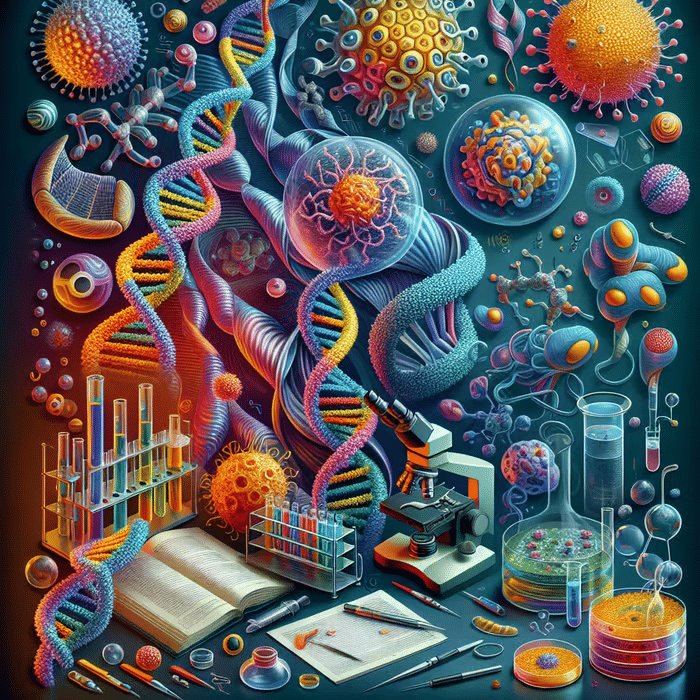NEET Exam > NEET Notes > Chemistry Class 12 > Mnemonics: Biomolecules
Mnemonics: Biomolecules | Chemistry Class 12 - NEET PDF Download
| Table of contents |

|
| Introduction |

|
| Classification of Carbohydrates |

|
| Amino Acids - Important Amino Acids |

|
| Structure of DNA |

|
| Types of RNA |

|
| Glycosidic Linkage |

|
Introduction
Simplify your understanding of key biochemistry topics with these catchy mnemonics, designed to make concepts like carbohydrates, amino acids, and RNA types easier to remember.
Classification of Carbohydrates
Mnemonic : "Massive Discoveries Spark Progress."
- Massive: Monosaccharides (1 monomer, e.g., glucose, fructose).
- Discoveries: Disaccharides (2 monomers, e.g., sucrose, lactose, maltose).
- Spark: Polysaccharides (many monomers, e.g., starch, glycogen, cellulose).

Amino Acids - Important Amino Acids
Mnemonic: "Big Green Frogs Are Little Tough Creatures."
- Big: Basic (Lysine, Arginine, Histidine)
- Green: Glycine (simplest amino acid).
- Frogs: Phenylalanine (essential amino acid).
- Are: Alanine (non-essential amino acid).
- Little: Leucine (essential amino acid).
- Tough: Tryptophan (essential amino acid).
- Creatures: Cysteine (contains sulfur).

Structure of DNA
Mnemonic: "Dancing Horses Create Grand Patterns."
- Dancing: Represents the Double strands (two strands of DNA).
- Horses: Represents the Helix (twisted, helical shape).
- Create: Represents the Creation of genetic information stored within the DNA.
- Grand: Represents the Genetic material being passed down.
- Patterns: Represents the Patterns of nucleotides (A, T, C, G) that form the code for traits.

Types of RNA
Mnemonic : "Mighty Turtles Race."
- Mighty: Refers to mRNA (Messenger RNA), the messenger that transmits information for protein synthesis.
- Turtles: Refers to tRNA (Transfer RNA) , which transports the correct amino acids.
- Race: Refers to rRNA (Ribosomal RNA), responsible for constructing the ribosome and helping proteins "race" into place.

Glycosidic Linkage
Mnemonic: "Giant Frogs Leap Over Rivers."
- Giant: Glycosidic linkage (the bond formed between two monosaccharides).
- Frogs: Formed at the linkage site.
- Leap: Linkage between the two sugars.
- Over: Oxygen atom connects the two sugars.
- Rivers: Reducing end where the glycosidic bond is often formed, particularly involving Carbon 1 of one sugar and Carbon 4 of the other

With these fun and easy-to-remember mnemonics, you can confidently recall essential biochemical concepts and apply them in your studies or exams.
The document Mnemonics: Biomolecules | Chemistry Class 12 - NEET is a part of the NEET Course Chemistry Class 12.
All you need of NEET at this link: NEET
|
75 videos|278 docs|78 tests
|
FAQs on Mnemonics: Biomolecules - Chemistry Class 12 - NEET
| 1. What are the main classifications of carbohydrates? |  |
Ans. Carbohydrates are primarily classified into three categories: monosaccharides, disaccharides, and polysaccharides. Monosaccharides are the simplest form of carbohydrates, consisting of single sugar units like glucose and fructose. Disaccharides are formed by the combination of two monosaccharides, such as sucrose (glucose + fructose) and lactose (glucose + galactose). Polysaccharides are complex carbohydrates made up of long chains of monosaccharide units, including starch, glycogen, and cellulose.
| 2. What are the important amino acids and their functions? |  |
Ans. There are 20 standard amino acids, but nine are considered essential, meaning they must be obtained from the diet. Important amino acids include leucine, isoleucine, valine, lysine, methionine, phenylalanine, threonine, tryptophan, and histidine. These amino acids play crucial roles in protein synthesis, regulation of metabolism, and supporting immune function. For example, leucine is vital for muscle protein synthesis, while tryptophan is a precursor for serotonin, influencing mood and sleep.
| 3. What is the structure of DNA and its significance? |  |
Ans. DNA (deoxyribonucleic acid) has a double-helix structure, consisting of two intertwined strands made up of nucleotides. Each nucleotide contains a phosphate group, a sugar (deoxyribose), and a nitrogenous base (adenine, thymine, cytosine, or guanine). The sequence of these bases encodes genetic information, which is crucial for the development, functioning, and reproduction of all living organisms. DNA's structure allows for replication and transmission of genetic information across generations.
| 4. What are the different types of RNA and their roles? |  |
Ans. There are three main types of RNA: messenger RNA (mRNA), transfer RNA (tRNA), and ribosomal RNA (rRNA). mRNA serves as a template for protein synthesis, carrying genetic information from DNA to ribosomes. tRNA is responsible for bringing the appropriate amino acids to the ribosome during translation. rRNA, a key component of ribosomes, helps facilitate the assembly of amino acids into proteins. Together, these types of RNA play essential roles in gene expression and protein synthesis.
| 5. What is glycosidic linkage and its significance in carbohydrates? |  |
Ans. Glycosidic linkage is a covalent bond that forms between two monosaccharides through a dehydration reaction, resulting in the formation of disaccharides or polysaccharides. This bond occurs between the hydroxyl group of one monosaccharide and the anomeric carbon of another. Glycosidic linkages are significant because they determine the structure and function of carbohydrates. For example, the type of glycosidic bond (α or β) influences the digestibility and properties of polysaccharides like starch and cellulose.
Related Searches




















